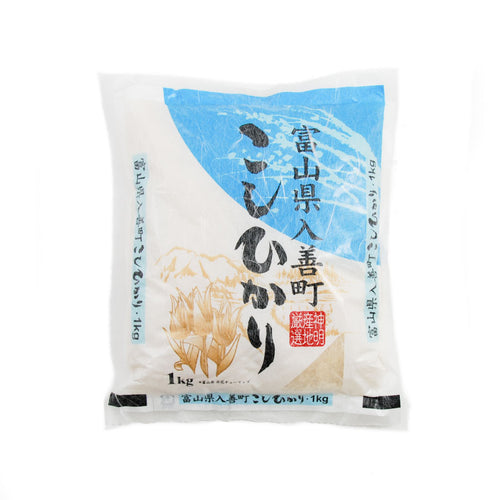Sushi Rice
-
Business customer? Our trade team is here to help. Learn more >
-
Business customer? Our trade team is here to help. Learn more >
-
Business customer? Our trade team is here to help. Learn more >
Filters
CloseSushi Rice
Master the art of sushi rice so you can make your favourite maki, nigiri and sashimi at home. It's essential to buy the correct rice to acheive perfectly light and fluffy rice that has a slightly sticky texture. Read on to learn more about sushi rice and how to prepare it. With our tips, you can enjoy delicious sushi and sticky rice, every time!
What is sushi rice?
Sushi rice is short-grain white japonica rice. This type of rice has a higher starch content than long-grain rice (such as Thai or Indian), which is what gives it stickiness. The high starch content also makes sushi rice sweeter than other types of rice.
Brown Sushi Rice
You can also use brown sushi rice. This is not as sticky, so is used in sushi such as temaki and onigiri balls, that are held together by soy paper or nori.
What is sushi rice vinegar?
To enhance the sweetness and stickiness, sushi rice is cooked with sugar, salt, mirin and rice vinegar. However, specific sushi vinegar is most commonly used as a shortcut to this seasoning. It's made from rice wine (sake), water, sugar, salt, and sake kasu (the leftover solids after sake has been brewed).
What is the difference between sushi rice and sticky rice?
Sticky rice or 'glutinous' rice is a particular rice variety. It is not the same as sushi rice! Glutinous rice has higher levels of starchy amylopectin, which makes the rice 'glue' together when cooked.
However, when short grain rice is seasoned with sugar and vinegar - 'sushi seasoning' - it becomes stickier, and will hold together to form sushi. That sticker seasoned rice is called sushi rice.
How do you make sushi rice sticky?
The preparation process is the key to enhancing the stickiness of the rice, so it will bind together in sushi rolls and nigiri.
- Rinse the rice in cold water 3 times for about 30 seconds until the water runs clear.
- Cook the rice over medium-high heat until it reaches a temperature of 160 degrees F.
- Once cooked, remove from heat, and move the rice to a wooden hangiri or wide bowl. Add the sushi vinegar or seasonings while stirring continuously with a wooden spoon or spatula. As you stir, the rice will cool and absorb the seasonings.
- Although there are no hard and fast rules for how much sushi vinegar to use, most chefs agree that a 1/4 cup of rice will require approximately 3 tablespoons of sushi vinegar. You can also add up to a teaspoon of sugar if you want your rice sweeter.
Then season to taste. Sushi rice is often seasoned with nori seaweed, sesame seeds, or perilla leaves before being used in sushi.
Read our complete guide on how to make sushi and shop all Sushi Making Ingredients.










